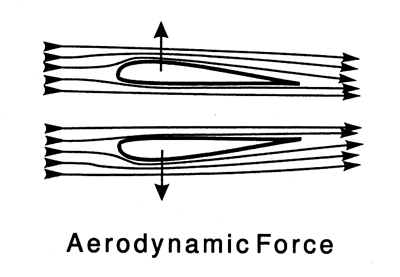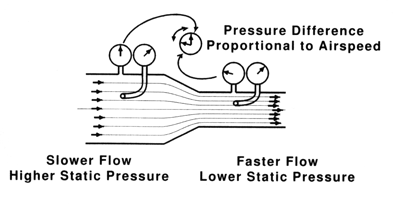INSIDE
RACING
T E C H N O L O G Y
IRT Home
IRT Home
News Page
Contents Page
Newsletter &
Books
email Paul
Race Tech 101: Wings on Racecars
The first time I saw a racecar with a wing on it, I thought it was dumb. But, thinking about it a while, I realized that racers are practical people competing in an intense environment. If those wings didn't do any good, they wouldn't be using them. What I finally figured out was the upside down wings provide additional force on the tires in excess of the weight of the car, allowing the tires to produce more grip. Wings on an airplane generate an upward force that's called lift. If you turn the wing upside down, mount it on a car, and move it through the air you get negative lift which we call downforce. More force pressing the car down with no extra weight on the car makes the car brake, accelerate, and turn better.
Slower Top Speeds but Faster Laps
Done properly, aerodynamic improvements to racing cars are almost free performance improvements. For an open-wheeled car especially, the tires produce a huge amount of aerodynamic drag. If a clever designer is able to reduce this drag by cleaning up the air flow over the bodywork and around the tires, wings and other downforce-producing devices can improve the car's performance with little or no penalty. Even when added aerodynamic devices produce some drag along with downforce, the car can turn faster laps. The car can actually have a slower top speed due to increased aero drag and still turn faster laps because of more grip in the corners.

How Wings Produce Lift
When you're driving on the freeway and you open your car window an inch or so, you get a rush of air coming into the car from the vents. This is the same natural occurrence that allows a wing to generate lift. The air going by the window has to speed up to get out of the way of the car. When air speeds up, it loses pressure. The lower pressure of the air speeding past the car window sucks more air out the window, increasing flow into the car through the vent. An airplane wing has a shape that causes the air going over its upper surface to speed up more than the air going under it. The air on top loses pressure and the difference in pressure top to bottom times the area of the wing generates a lifting force.
Bernoulli's Theorem
In 1738 Daniel Bernoulli, a Swiss physicist, observed and measured fluid flow behavior causing him to propose that a fluid loses pressure as it speeds up. Moving air has static pressure and dynamic pressure. The total of the two is called the total pressure and that remains the same whether the air is still or moving. Static pressure plus dynamic pressure is total pressure, a constant at sea level.
Any fluid (air or water, for instance) has no dynamic pressure when still. When a car is motionless, the air inside and outside has no dynamic pressure and the static pressure is the same both places. When you put your hand out the window of a moving car, you feel the momentum of the air as it runs into your hand. This pressure you feel is called the dynamic pressure and it increases the faster you go.

The graphic above shows a fluid flowing in a pipe that gets smaller. For the same flow volume the fluid has to speed up in the smaller pipe. The guages measure static pressure (in the pipe wall, 90 degrees to the flow) and total pressure (parallel to the flow). When the fluid speeds up total pressure stays the same while static pressure decreases.
Through experiments, Bernoulli found out that this pressure difference increases with the square of the airspeed. That means the pressure loss goes up by a multiple of four when the speed doubles. If you can accurately measure the difference between these two pressures, you can find out how much the speed of the air increases.
That lower pressure air going by outside your car window is what causes lift on airplane wings and downforce on racecars. The curved upper surface of the wing (on a plane) makes the air speed up to get around the wing in the same time as the air on the bottom going a shorter distance. This speed difference creates a pressure difference because the faster air on top loses static pressure as it gains dynamic pressure. When the pressure on the bottom of the wing is higher than the pressure above the wing, we get a pressure difference and a lifting force.
Turn a wing upside down, put it on a car moving through the
air-you get downforce.